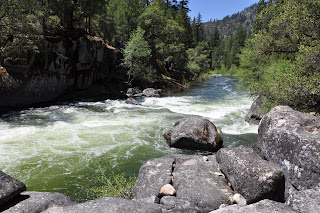A friend forwarded to me a
"letter" that appears all over the Internet. A local elected official sent it out. It purports to be from a business owner, bemoaning high taxes, the stimulus checks given out last year, welfare mothers, and the like.
I thought about it for much of the day. Here's my response ...
Justice Oliver Wendell Holmes called taxes, "the price we pay for living in a civilized society."
My extended family includes people who have started and run successful industrial and retail businesses as well as people like me who have spent their careers working for businesses or government. My husband has been self-employed most of his adult life.
I respect the hard work of businesspeople and their importance in our society. I also know that the taxes they pay can seem onerous at times. My taxes seem that way at times, too.
But those taxes do not come without benefit. Like the rest of us, businesspeople have benefited and continue to benefit from generations of public investment in public services and infrastructure made possible by taxes and other government funding.
Without roads, highways, airports, ports, railroads, police and fire protection, emergency medical services, correctional institutions, the Internet, public colleges and universities (and their innovations), teaching hospitals, public schools, landfills, water and wastewater systems, SBA loans, and more, it would be pretty tough to run a successful business in this country.
Developing countries look to our own to learn how to develop and implement tax systems because they know they need public investment in services and infrastructure to allow businesses and communities to flourish. Delegations come to California every year to learn how our tax system works (and doesn't, I imagine -- it's far from perfect).
I was also interested in the welfare reference in the letter.
People will always argue about what level of taxation is best or most fair and how that money should be used. But many of us do not mind having some of our taxes go to children who would who otherwise not have clothes, food, or housing. No child should suffer in our affluent country, even if their parents are less than perfect. Accountability for adults is one thing, but forcing innocent kids to suffer is quite another. Taking care of children is an American value consistent with all of our traditions.
I looked up the
county budget to check out local social services expenditures. If I got the math right (always open to question), the social services part of the county budget is about 14.4 percent of the total. More than 97 percent of the revenue for that chunk of the budget comes from "intergovernmental transfers" -- the state and federal government. Among other things, the money goes to help:
- Abused children and seniors. There are more of each here than most people realize.
- Elderly people in nursing homes who have run out of money to pay for this expensive care themselves. These folks have always been a large percentage of the local and state Medi-Cal caseload.
- Elderly people, blind people, and people with disabilities living at home who, without In-Home Supportive Services, would also be in nursing homes, costing us all a lot more.
- People who would otherwise have no health coverage for themselves or their kids. Without assistance, they often turn to emergency rooms for their health care and seek care much later when conditions are more costly to treat. The costs get passed on to the rest of us in higher health care costs.
- People who cannot feed their children without food stamps.
- And yes, people on public assistance, which largely goes to families with children.
Long ago, I worked for the county Department of Social Services. There are people who use those services that shouldn't, sure. But there are plenty of good people leading hard-working lives who at some point find themselves needing Medi-Cal, or food stamps, or some other helping hand until they can get a job again, or get through some other rough financial spell. And many local middle-class families need help from Medi-Cal when they need to place a loved one in a nursing home. The stereotypical "welfare mother" is just that, a stereotype.
I agree that we need a system in our country, and in our county, that rewards hard work and understands that small business is the foundation of our economy. But I also think we need a system that cares for people when they need help. It's the compassionate, American thing to do.
Does that make me a bleeding heart? Maybe so. But if the alternative is turning a cold shoulder and a hard heart toward people in need, so be it.








